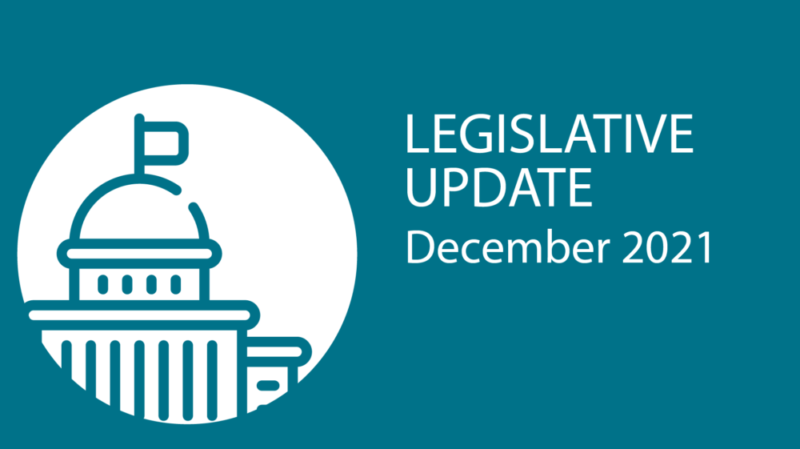This website uses cookies so that we can provide you with the best user experience possible. Cookie information is stored in your browser and performs functions such as recognising you when you return to our website and helping our team to understand which sections of the website you find most interesting and useful.
News
Build Back Better Likely to be Punted to Next Year
The House and Senate Democrats were able to check off a couple more must-pass legislative priorities, such as the National Defense Authorization Act (NDAA) and addressing the debt limit. However, the Senate version of the Democrats’ massive climate and social spending package, the Build Back Better Act (BBB), remains stalled and it is looking more and more likely that Congress will miss its self-imposed Christmas deadline to pass the legislation.
The reconciliation measure (H.R. 5376), which is the budgetary procedure Democrats are using to pass BBB with a bare majority, continues to be tweaked to ensure that it complies with the necessary “Byrd rule” limitations that prohibititems that do not have a significant impact on the budget from being attached to this expedited process.. More importantly, it still doesn’t have the support of the entire Senate Democratic Caucus needed for passage. President Joe Biden’s negotiations with Sen. Joe Manchin (D-WV) appear to be at a standstill and Sen. Krysten Sinema (D-AZ) remains non-committal. Democrats also have outstanding issues regarding provisions on immigration and SALT.
In the meantime, the Senate Majority Leader Chuck Schumer (D-NY) has few options left, and while he hasn’t publicly admitted that the BBB is likely to be punted into next year, he’s considering using the Senate’s remaining time to work on confirming some of the stalled Biden administration nominations and possibly voting rights legislation. Democratic Senators are also searching for a way to address the expiring Child Tax Credit.
This week, the House has recessed for the holiday. It is not scheduled to return until Jan. 10.
White House Executive Order as “Catalyst” to Administration’s Climate and Sustainability Goals
President Joe Biden on Dec. 8 signed an Executive Order (EO) titled “Catalyzing Clean Energy Industries and Jobs Through Federal Sustainability.” The EO puts the Federal Government’s “scale and procurement power” front and center as an essential tool in moving forward with the administration’s clean energy, resiliency, and net-zero emission goals. The administration anticipates that it will also spur private markets by leading as an example in how to combat climate change. “As the single largest landowner, energy consumer, and employer in the Nation, the Federal Government can catalyze private sector investment and expand the economy and American industry by transforming how we build, buy, and manage electricity, vehicles, buildings, and other operations to be clean and sustainable,” the EO reads.
The White House emphasized that the recently enacted Bipartisan Infrastructure Law, FY 2022 budget, and pending Build Back Better Act will provide agencies with the funding necessary to achieve the executive order’s goals. The EO outlines five ambitious goals for federal agencies, including achieving net-zero emissions from overall federal operations and procurement by 2050. Other goals include clean power goals that direct federal agencies to achieve 100 percent carbon-free electricity by 2030, 100 percent zero-emission vehicle (ZEV), and a net-zero emissions building portfolio by 2045.
These goals are accompanied by broader climate resiliency and sustainability commitments within its procurement, operations, and infrastructure. It targets building a “climate- and sustainability-focused workforce,” promotes domestic manufacturing, and aims to advance environmental justice and equity. It also directs agencies to leverage domestic and international partnerships for progressing on these issues.
Biden is also directing agencies to prioritize purchasing sustainable products. The EO directs agencies to establish agency targets for FY2030 to increase their energy and water efficiency. Based on building type and composition, agencies would have to set performance benchmarks for energy and potable water use.
The Federal Government would also have to minimize waste and pollution and support recycled products markets. Agencies will transition to a circular economy as defined in section 2 of the Save Our Seas 2.0 Act (Public Law 116-224). The goal will be to divert at least 50 percent of non-hazardous solid waste annually and construction and demolition waste and debris by FY2025 and 75 percent by FY 2030.
The EO also details a new “Buy Clean” policy to promote the use of construction materials with lower “embodied” emissions. It establishes a Buy Clean Task Force to recommend “policies and procedures,” including increased supplier reporting and programs to encourage federal procurement of particular materials “to expand consideration of embodied emissions and pollutants of construction materials in Federal procurement and federally funded projects.”


